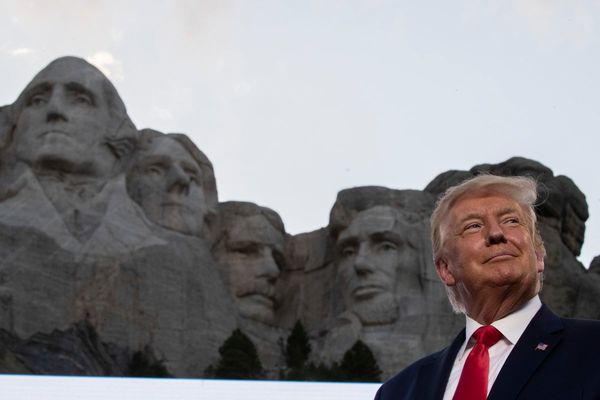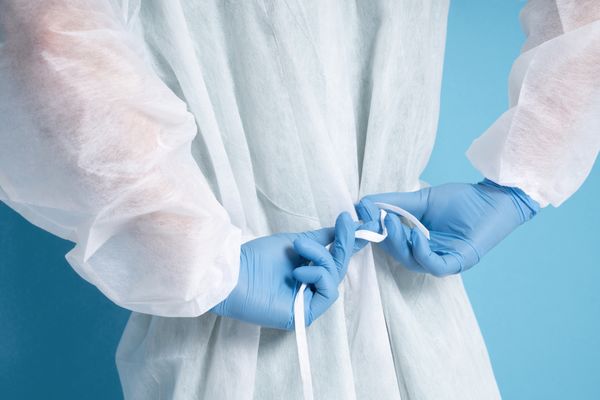
Calls for more public school spending are growing louder in states like Texas, Pennsylvania, and New York. "You will see terrible cuts," warned Texas State Representative Jon Rosenthal, who is leading a group of Democratic lawmakers demanding that Gov. Greg Abbott call a special session to boost education funding in the state.
Public school budgets are a mess heading into next school year but it's not for a lack of dollars—President Joe Biden's COVID-19 windfall for public schools is backfiring. During the pandemic, Congress doled out $190 billion in K-12 relief aid, which created a fiscal cliff and helped fuel inflation that's now eating into school districts' budgets.
The latest federal data from the U.S. Census Bureau show that K-12 spending hit record highs in 2022. On average, public schools received $18,911 per student, with New York leading the country ($35,902 per student), followed by New Jersey ($29,019 per student), Connecticut ($28,363 per student), Vermont ($27,338 per student), and Pennsylvania ($24,917 per student). For its part, Texas spent $14,696 per student—up 16.8% in real terms since 2002.
But the fiscal waters are getting choppy for public schools. Between 2020 and 2022, inflation-adjusted funding increased by $1,300 per student, but nearly all of this—$1,245 per student—was attributed to a temporary spike in federal dollars.
For public schools that used the one-time funding to add staff, increase salaries, or plug budget holes—things experts repeatedly warned against—the fiscal reckoning has arrived as federal relief aid will expire later this year.
"It is no exaggeration to say that school finance is at an inflection point," wrote Marguerite Roza of Georgetown University's Edunomics Lab. With the National Center for Education Statistics projecting enrollment to keep falling until at least 2030, widespread school closures are on the horizon and already underway in Seattle, Phoenix, San Antonio, and other cities.
But the bigger story is how much inflation has eaten into state and local funding, which account for the lion's share of K-12 dollars. In the 2022 school year, the average monthly price level was 9.6 percent higher than just two years earlier—enough to negate substantial increases by state legislatures.
Between 2020 and 2022, non-federal funding increased by $1,485 per student nominally but only $55 per student when adjusted for inflation. In comparison, non-federal funding went up nominally by $1,204 per student between 2018 and 2020—the two years before COVID-19— resulting in a $769 per student bump after adjusting for inflation. If inflation had stayed at the pre-pandemic level, public schools would have had roughly $938 per student in additional funding growth.
But don't feel too bad for public schools—they're getting what their unions lobbied for.
Congress allocated $190 billion in federal K-12 relief aid in three separate bills. By the time Biden took office in January 2021, the first two packages—totaling $67.5 billion—had already been delivered to school districts, which research shows was enough to reopen public schools safely.
But at the urging of groups like the National Education Association, National School Boards Association, and American Federation of Teachers (AFT), Biden signed his $1.9 trillion American Rescue Plan in March 2021, which included an additional $122 billion for K-12 education.
"The relief built into the American Rescue Plan [ARPA] is on its way because of hardworking advocates like union members and their coalition partners, who relentlessly called legislators, wrote petitions and led campaigns to articulate the need and provide help to the American people," boasted AFT.
Many economists—including former Barack Obama advisor Larry Summers—warned about ARPA's fiscal impacts, but teachers' unions and other interest groups ignored their calls. While it's difficult to pinpoint ARPA's effect on price levels, there is consensus that it helped bring inflation to its highest level in decades. And with K-12 relief dollars spent on things like electrifying bus fleets, football stadium upgrades, and social-emotional learning, it's also safe to say that public schools didn't need these dollars in the first place.
ARPA's legacy will be the financial instability left in its wake for public schools. In the years ahead, they'll grapple with the consequences of their pandemic spending decisions and the rampant inflation they lobbied for. In the long run, public schools would have been better off without Biden's $122 billion gift to the teacher's unions.
The post K-12 Schools Crippled by Covid Cash appeared first on Reason.com.







